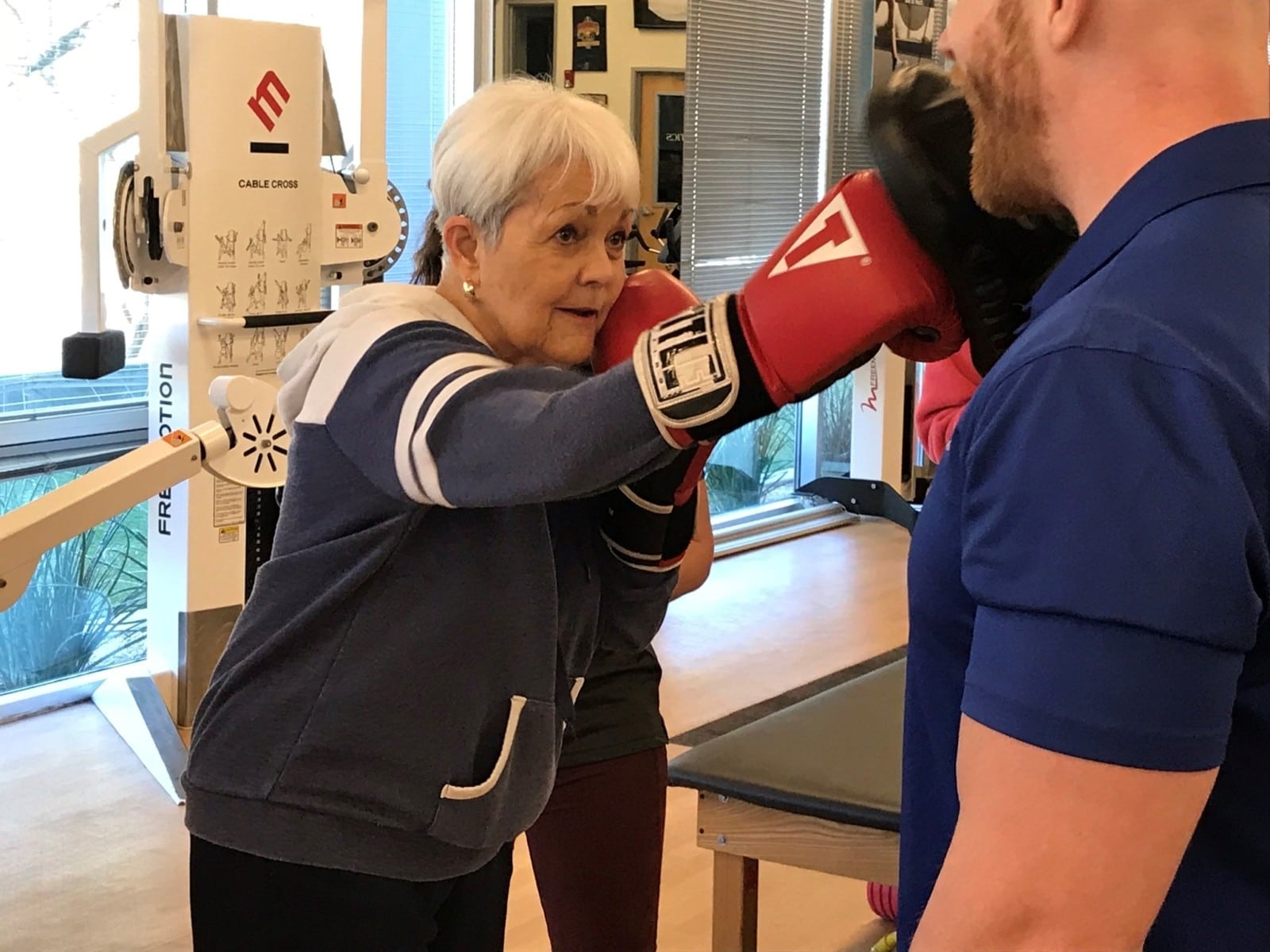Every patient looks a little different, especially when it comes to neurological challenges presented by conditions like Parkinson’s disease. Therefore, we strive to take an individualized, whole-body approach to every patient. So, when individuals with Parkinson’s come to us to help them with issues such as an abnormal gait, or perhaps rigid posture, we first evaluate them top to bottom.
The most common issues we see in our patients with Parkinson’s are walking with with an altered gait pattern pattern or shuffling. They may be hunched over. Balance issues and tremors are also common. Because of these walking and posture challenges, it’s not unusual to see lower back or hip pain. All these challenges can affect their day-to-day quality of life.
When To Seek Physical Therapy For Parkinson’s
Ideally, patients would get started on physical therapy immediately after diagnosis. In fact, physical therapy shouldn’t just be treated as a one-time thing or something to check off the list. It should be a regular part of your wellness, just like seeing a primary physician for a checkup. The most successful Parkinson’s patients see a therapist at least every six months to a year.
Here’s why: your disease may or may not progress, just like your physical strength and challenges may evolve over time. Another good reason to see a therapist is when movements is that movements and exercise may have gotten easier for you. If you no longer feel challenged by your current exercise routine, then perhaps an adjustment is in order. Parkinson’s is a progressive disorder; it’s important to stay on top of your therapy and continually find new ways to to strengthen and improve your function.
What PT Can Do For Parkinson’s
It’s not unusual for patients to feel a bit skeptical when they first begin physical therapy. You may think, “What can physical therapy do for me? Why am I here?”
Here’s the exciting part: research shows that physical therapy can slow the progression of Parkinson and minimize the symptoms. Many patients report minimized tremors after exercise. A calmness throughout their body. Or, a surge of energy and regained confidence. Recently, one researcher reported that, “If you have Parkinson’s disease and you want to delay the progression of your symptoms, you should exercise three times a week with your heart rate between 80 to 85 percent maximum. It is that simple.”(NBC News)
How To Maximize Your PT Benefits
Your therapy doesn’t stop at the door to our office. Get the most out of your program by:
- Committing to exercise at home. We’ll help you by teaching you exercises you can do on your own.
- Find an exercise you like outside of therapy. It’s good to mix it up. Many patients enjoy yoga and tai chi.
- Join our annual workshop for Parkinson’s. Spooner hosts an annual workshop, exclusively for Parkinson’s. You don’t need to be a regular patient to join.
Learn more about Neurological Rehabilitation at Spooner Physical Therapy. Ready to schedule an appointment? Schedule an appointment or complimentary movement screen with a Spooner physical therapist at one of our locations throughout the valley.

